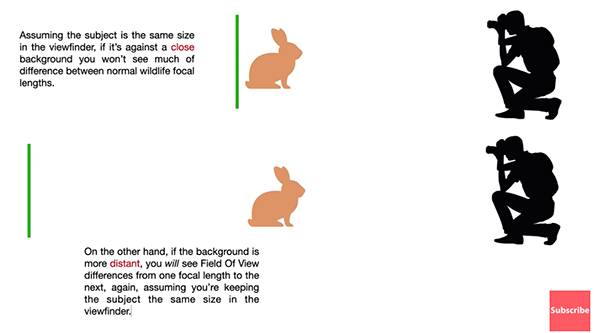Foolproof Tips for Depth of Field, Field of View & Lens Magnification (VIDEO)
There’s no better way to improve your skills than by borrowing wisdom from an accomplished photographer with years of professional experience. The tutorial below provides several “pro secrets” for doing just that when you’re shooting outdoors.
Instructor Steve Perry specializes in nature, wildlife and landscape photography, and the popularity of his Backcountry Gallery YouTube channel attests to his success as an educator. He introduces today’s episode like this: “We’ll explore how to use depth of field to improve your photography, then I’ll show you some killer tips for background control using lens magnification of field of view.”
Perry provides a “hodge podge” of advice in barely 13 minutes that he says is rarely discussed and ” will really give you an edge in the field.” It’s all about using depth of field, field of view, and lens magnification to capture the best images possible with all sorts of outdoor scenes.

The lesson begins with an overview of how depth of filed works, so you’ll fully understand this critical concept and the tips Perry provides. Simply put, depth of field is the area or zone of acceptable sharpness in an image— i.e. the distance between the nearest and farthest objects in a scene that appear acceptably sharp.”
With that in mind, Perry demonstrates why depth of field remains roughly the same for any given focal length if you keep the subject the same size in the frame and shoot with the same aperture setting. For those of you who find this confusing, Perry adds this: ‘I’m going to show you how depth of field at 600mm at f/5.6 is the same at 24mm at f/5.6 when the subject in the two images is the same size in the frame.”
Get ready to have your mind blown as the lesson continues and Perry explains how all this applies in the field. One mistake Perry says he notices regularly has to do with macro images that lack sufficient depth of field. Some photographers think that using a wider macro lens and approaching the subject more closely will solve the problem. Nope, that doesn’t work.

The same misconception occurs among some wildlife photographers, and Perry explains why this approach fails here too. On a more positive note, Perry takes a look at what happens to the background of these images shot with different lenses, and the practical use of these observations.
The takeaway is that as you reduce focal length there’re much more detail in the background—even if depth of field remains the same with his controlled setup. Perry offers two explanations for this interesting phenomenon: “First you have more magnification and secondly there are varying fields of view.
Perry then wraps all this up into a nice, tight ball so you’ll know how to put this knowledge to work the next time you head out in the field. There’s more useful shooting advice on this instructional YouTube channel, so head over there and see what’s available.
And don’t miss the tutorial we posted earlier from another pro, demonstrating five tips for shooting & editing epic b&w nature and wildlife photographs.
embed




